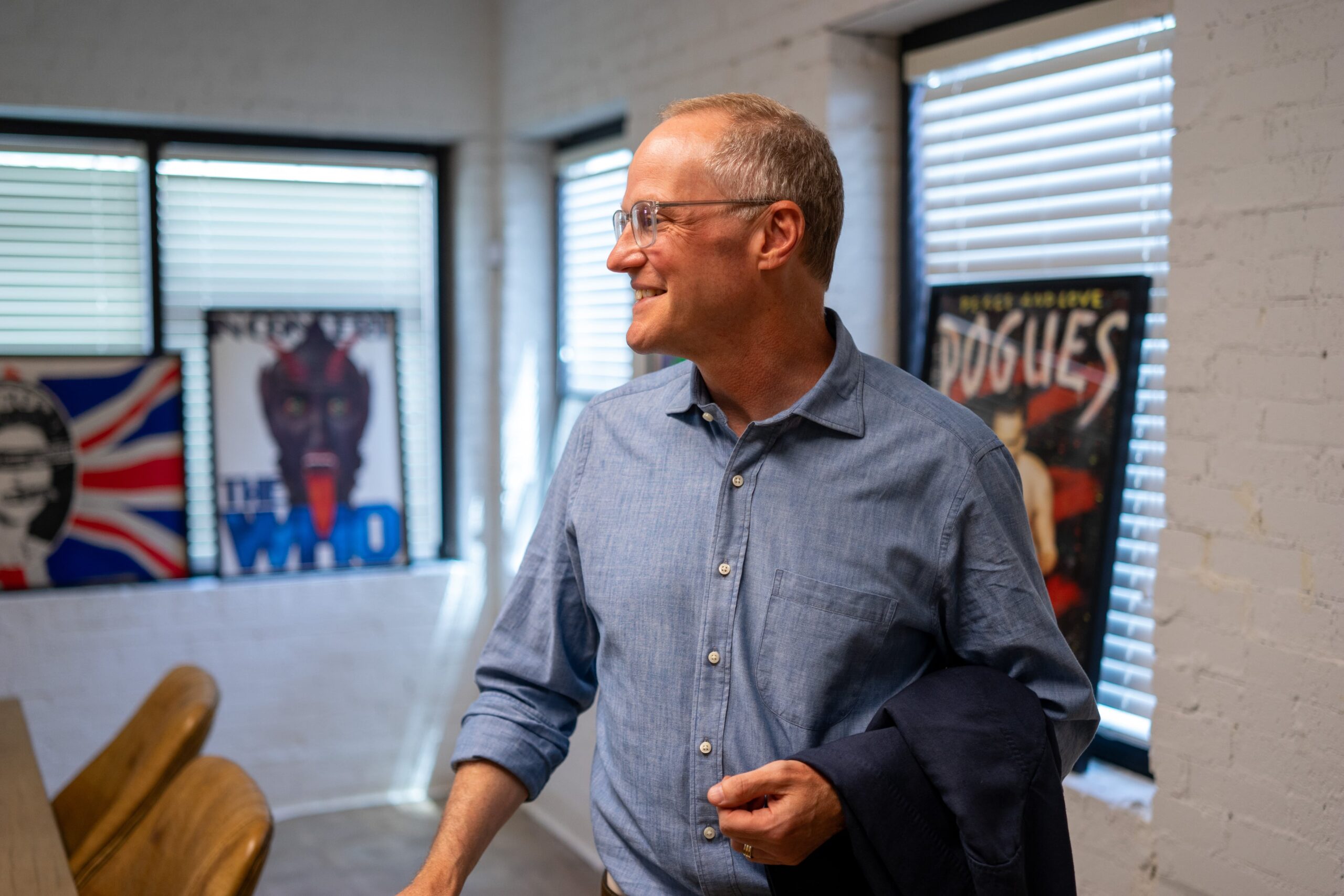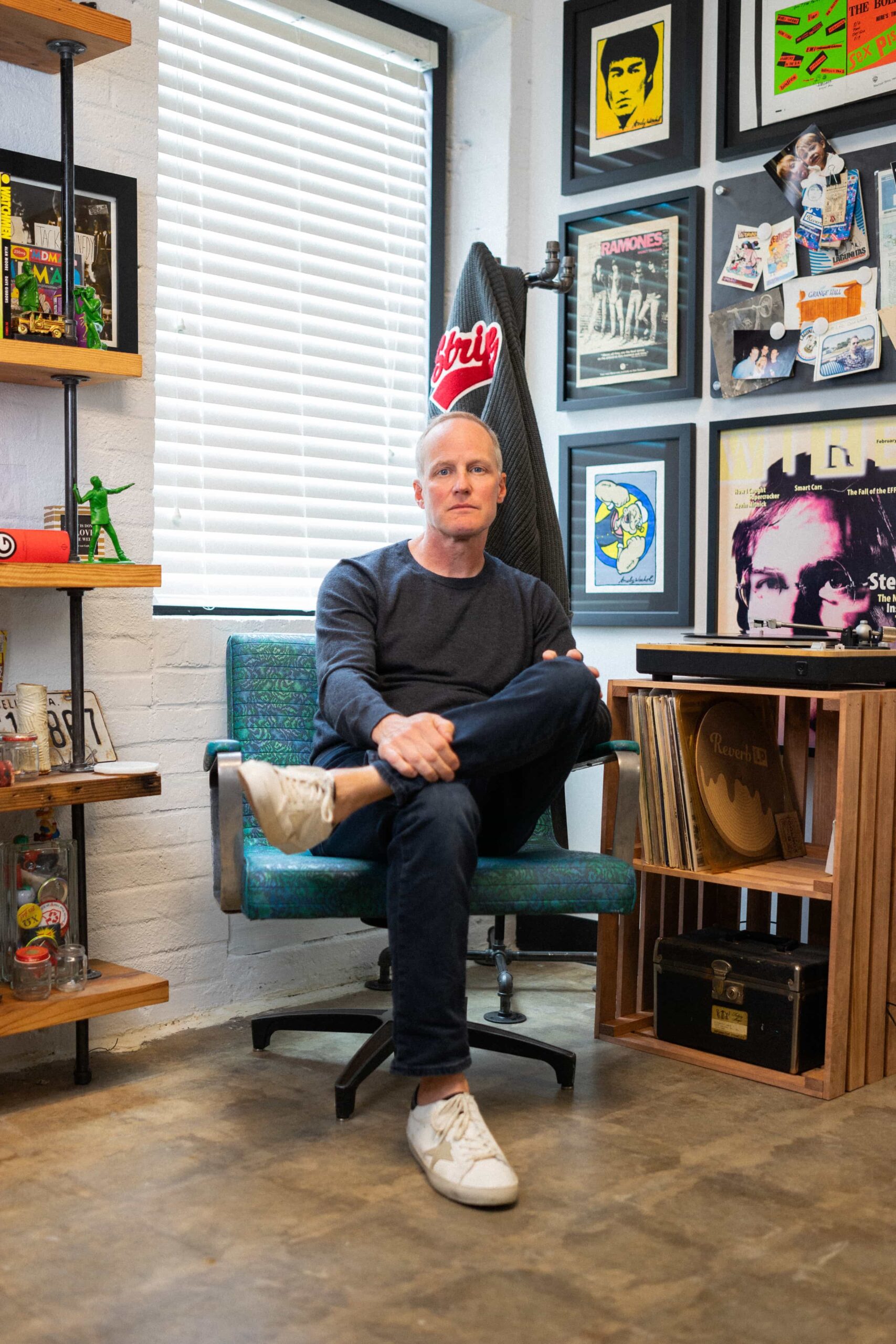history
![]()
- The Beginning
- Digital Awakening
- Early Success with Claus.com
- Innovation and Viral Experiences
- Internet Conference and New Horizons
- Spunky Productions and Digital Entertainment
- Post-Spunky and New Strategic Horizons
- Edelman and the Rise of Social Media
- Stripe and Crisis Response
- Final Reflections
- The Beginning
- Digital Awakening
- Early Success with Claus.com
- Innovation and Viral Experiences
- Internet Conference and New Horizons
- Spunky Productions and Digital Entertainment
- Post-Spunky and New Strategic Horizons
- Edelman and the Rise of Social Media
- Stripe and Crisis Response
- Final Reflections
Read the success story
The
Beginning
From the very beginning, I’ve been an entrepreneur — not just by title, but by nature. When I graduated college, I found myself trying to explain to people at my own graduation party that I was going to be an entrepreneur — a word that, at the time, seemed foreign to most and didn’t quite translate.
I’ve always been drawn to ideas, especially the ones that seemed slightly out of reach, and I worked relentlessly to bring them to life. My career began when the Internet was just a flicker of what it would eventually become. I built one of the first real estate bulletin board systems (BBS) — a primitive but promising precursor to the real estate listings we all know today. I even built a film location map company that turned cities into living movie sets, helping people track down the exact spots where their favorite scenes were shot. I also tried an email tool that pushed out lunch specials at local restaurants but all fell short.
After a few early startup ideas that didn’t quite pan out, I found myself diving headfirst into this emerging thing called the World Wide Web. I taught myself the basics — how to code, how to edit images for the Internet — skills that felt almost trivial at the time but would later prove to be invaluable. I even started buying domain names that, to be honest, felt silly back then. Little did I know how much they would one day be worth.
It was during a conversation with my older brother Karl that the lightbulb really went off. The Internet wasn’t just another trend — it was something big. Strangely, the people around me didn’t seem to see it yet. I could have gone in any direction at that point, but for some reason, I became fixated on convincing advertising agencies that the Internet was going to matter — that it would change everything. I wanted access to brands. It became my pitch.
It was the hardest sell of my life. In hindsight, maybe I should have started my own company right then and there but raising money was just as hard. Instead, I was lucky enough to convince an agency to take a chance and step into the game.
1993
From the very beginning, I’ve been an entrepreneur — not just by title, but by nature. When I graduated college, I found myself trying to explain to people at my own graduation party that I was going to be an entrepreneur — a word that, at the time, seemed foreign to most and didn’t quite translate.
I worked relentlessly to bring them to life
/
Entrepreneur
/
Disinformation Hunter
/
I worked relentlessly to bring them to life
/
Entrepreneur
/
Disinformation Hunter
/
I worked relentlessly to bring them to life
/
Entrepreneur
/
Disinformation Hunter
/

1994
Digital Awakening
Back then, we were all forced to become hybrids. To survive, you had to be part creative, part technologist, and part businessperson — there was no other option. I was fortunate to have Bruce Levitt, a legendary copywriter from J. Walter Thompson, as a mentor. Bruce taught me that words, visuals, and story weren’t just art — they were tools to shape perception and drive action.
Under his guidance at Pollak Levitt Chaiet, I created Claus.com, which grew into the largest Santa Claus website on the Internet. By 1995, our digital agency was standing shoulder-to-shoulder with industry pioneers like Modem Media, the Martin Agency, and Organic—firmly positioned among the early leaders of the Internet era. But even then, it was clear the landscape was evolving at neck breaking speed.
Convincing companies in the early-90s to bet on the Internet wasn’t easy — most were still skeptical, some outright dismissive. So, I created Claus.com as a case study, betting on the universal appeal of Santa Claus to prove the Internet’s power — and it worked. Claus.com was the first Santa Claus website, launched in 1994. We were the first to track Santa online, the first to introduce a Naughty or Nice list, and the first to offer kids around the world the ability to email Santa. Between 1994 and 1996, Claus.com became one of the largest websites on the entire Internet. Nielsen iPro ranked us the #1 website during the 1995 holiday season. The traffic was beyond anything we could have imagined. Sponsors like Chevrolet and Service Merchandise took notice, becoming some of the first brands to advertise on the web. The servers couldn’t keep up. The volume of kids tracking Santa, sending millions of emails from every corner of the globe, was staggering. It also became a very profitable business.
The Internet was the Wild West back then, and we were writing the rules in real time. I created one of the very first “refer-a-friend” features — a concept that would later become a foundation of viral sharing online. We built online trading card systems, one of the first kid-only search engines, and were part of Macromedia’s beta program for Flash, allowing us to create some of the very first animated shorts and games on the Internet.


Every client brought a new industry, a new puzzle, and countless unknowns. It was chaotic, thrilling, and the perfect playground for someone like me — someone who didn’t just want to build, but wanted to position, create value, and most importantly, make things work in the real world.
I still remember attending the First International Conference on the World Wide Web (U.S. Edition), often called “WWW1 USA,” held at MIT in Boston on October 5–7, 1994 — a gathering of the Internet’s earliest, most adventurous minds. I remember Marc Andreessen’s presentation on Mosaic and meeting the team from General Magic, who later laid the groundwork for the mobile revolution. They handed me a simple keychain that I still have to this day. Their booth was one of only a few set up at the event — but you could feel that something big was starting.
I was just 23 but soon found myself on stages and in interviews, helping companies and the media make sense of this rapidly evolving technology. Claus.com, which started as a quirky, holiday-themed experiment, suddenly became a case study in digital possibility, landing coverage in USA Today, CNN, The New York Times, and countless others.
I was even asked to help shape strategy for the NY Financial Symposium on the Internet — a consortium of banks and financial services attempting to grasp how this emerging medium would affect their industries. I worked on the first ad banner units on HotWired (now Wired.com) and hosted one of the Internet’s largest websites with Earthlink (Mindspring), which would go on to become the second-largest ISP in the U.S. By 1996, we were among the first to implement audited web traffic tracking through Nielsen iPro. Nielsen, traditionally known for TV ratings, partnered with Internet Profiles Corporation (I/PRO) to create one of the first standardized systems to measure web audience behavior.
As the Internet started to take root, I leaned into the wild, untapped world of technology. That path led me deeper into advertising agencies, just as clients were nervously exploring whether this “Internet thing” was worth paying attention to.
I helped shape the first online presences for brands like Prudential Securities, Prudential, Kimberly-Clark, Security First Network Bank (SFNB the first Internet bank), Powertel (eventually became T-Mobile) and many others.

That spirit of experimentation naturally pulled me toward entertainment. I began collaborating with incredibly talented illustrators like Craig Thomas and Dave Thomas, whose artistry brought characters and entire worlds to life on Claus.com and Scary.com.
They made magic — literally — transforming simple concepts into immersive, shareable experiences that delighted kids worldwide. Creating imagery at that time was incredibly difficult due to the speed of the Internet. They were artists who challenged where you could go visually with this new technology.
1995
-
Nielsen iPro ranked us the #1 website during the 1995 holiday season.
1998

Spunky Productions and Digital Entertainment
In 1998, riding that momentum, I moved to San Francisco and co-founded Spunky Productions with my brothers. We built a powerhouse studio — 70 animators, designers, writers, and producers — fueling some of the very first digital entertainment experiences. We worked with iconic names: Sony, DreamWorks, Universal Studios, Warner Bros., Capcom, Stan Lee Media, Tim Burton, and even the Backstreet Boys. We built an animation studio in the Philippines and partnered with AIC (of Tenchi fame) to launch JapanToon, the first dedicated anime platform.

Together, we created platforms, games, and interactive experiences for film, television, and music — at a time when most still doubted whether the Internet could handle entertainment. But in Japan the story was different, I was introduced to NTT Docomo and I saw where mobile was going. Yet, in the US, everyone in Hollywood was focused on Internet shorts and finding studios. We were at the parties, inside the studios, constantly pitched wild ideas, and even sat with Stan Lee himself to brainstorm animated shorts for the web. We were producing animated shorts and games for Atom Films, Shockwave and others.
Our company’s valuation soared so high that we found ourselves negotiating to acquire one of the most iconic entertainment libraries — entirely with stock. It was a wild time. Our office, tucked between the first and second floors of a building in San Francisco’s South of Market district, wasn’t even up to code. The ceilings were ridiculously low, but we kept it scrappy. While others were throwing lavish parties and burning through cash, we stayed disciplined. We embraced what it meant to be a real startup — and acted like one
But what I remember most were the people. Tom Ajello, whose creativity could break through even the most rigid technical constraints. Damien Schaeffer, whose raw talent could shape a beautifully designed space one day and compose music the next. Damien would go on to found Scenic Figure, creating for REM, Green Day, and Widespread Panic. Budd Lewis, a true master storyteller, taught me how to build characters that lived beyond a screen. Budd had worked on Creepy, Eerie, The Terminator, Transformers, and The Smurfs. Learning from him wasn’t just about craft — it was about understanding how to make stories endure.

After selling Spunky in 2000, I returned to the agency world, but this time with sharper eyes and a deeper understanding of where technology was heading.
I focused on search engines, mobile technology, and user experience — and along the way, built my first nearshore operation in Mexico. That model would quietly become one of the most valuable frameworks I’d ever create. We proved its power immediately, building a $1M website for Home Depot for under $100K — without sacrificing quality.
I worked relentlessly to bring them to life
/
Entrepreneur
/
Disinformation Hunter
/
I worked relentlessly to bring them to life
/
Entrepreneur
/
Disinformation Hunter
/
I worked relentlessly to bring them to life
/
Entrepreneur
/
Disinformation Hunter
/

2002
I led global SEM for Delta at Modem Media
That success brought me to Modem Media, where I became the global lead for Delta Airlines’ Search Engine Marketing. Working with a brilliant digital team, we helped Delta generate $140M in online ticket sales — a staggering number at the time — and built one of the first user experiences that seamlessly blended ticketing, loyalty, and customer care.

Charles Marelli, one of the most forward-thinking creative directors I’ve worked with, envisioned a future where your phone would be your boarding pass — every word of it came true. Around the same time, under Grant McDougal’s leadership, we built a Center of Excellence for HP, which opened my eyes to the massive potential of globalized digital talent.
After navigating the Digitas and Publicis mergers, I reunited with Don Scales at Agency.com, then quickly followed him to iCrossing as it was transforming from a search powerhouse into a full-service digital agency. Adam Lavelle’s vision helped guide this shift, and through it, I learned what it really took to evolve a business amid rapid industry change.
Where Kids Became Heroes: A New Kind of Online World
I eventually left to chase another entrepreneurial spark — launching a virtual world gaming company for kids with my Liz. It was the perfect moment; Club Penguin was booming, and the idea of safe, community-driven online spaces for kids was just taking off. We launched Elf Island, the first game where in-game actions directly resulted in real-world good.
2007

Players built homes for Habitat for Humanity, saved endangered animals, tracked polar bear migrations, and even contributed to wildlife rescue efforts during the Gulf oil spill. After merging with XEKO, we added a physical component, similar to Webkinz, but focused on endangered species and real-world impact.
Despite building an engaged, passionate community, we hit a wall. The banking crisis disrupted everything, and investor dynamics turned toxic. In the end, it wasn’t the model or the market that failed — it was greed and control struggles that broke the company. There was no small irony watching a business built on doing good be derailed by those more interested in control than mission. Still, the lessons I learned — especially about community-building — would later become essential as social media began reshaping how people connected online.

2010
Edelman and the Rise of Social Media
I hesitated at first, skeptical of PR’s slow embrace of digital, but I quickly saw the opportunity. Social media was shifting the entire landscape, and PR was perfectly positioned — if it could evolve fast enough.
Initially focused on Search Marketing in the Southeast, I soon took on a larger role, helping build Edelman’s global digital practice. We launched new service lines — paid media, analytics, measurement, and digital crisis management — which helped Edelman stay competitive during a time of profound change.
It was here, at the intersection of media, trust, and influence, that I found my niche. Social media wasn’t just disrupting; it was redefining the crisis itself. Through analytics and monitoring, we could predict, shape, and manage outcomes before they reached mainstream media. This work laid the foundation for Edelman’s digital analytics team, which would later merge with Edelman’s research arm to become Edelman Intelligence.
I was again fortunate to work alongside true pioneers: David Armano, Steve Rubel, Phil Gomes, Dan Webber, Richard Ng, Adam Hirsch — people who, in many ways, wrote the first chapters of modern digital and social marketing. For a time, Edelman was untouchable, leading the social media space for the Fortune 500. Eventually, the shift to paid media leveled the playing field, but those early years were nothing short of remarkable.

In 2010, I returned to the agency world once again, joining Edelman — stepping into PR at precisely the moment social media was beginning to transform it.
One focused on solving the hardest challenges: winning at the top of the funnel, unlocking earned media’s real value, and using data to navigate crises and protect reputations. That playbook quietly became the foundation for everything that followed.
Stripe Theory and Stripe Reputation were built on the premise of data at the core. We balanced this with an offshore operation in the Philippines and made our first significant investments in AI. But before the AI came the crisis work. I built a crisis response machine that could be unleashed within hours. In 2016, I ran a 100-person social media campaign to control one of the biggest Hollywood divorces. My data analysis tools could predict outcomes within hours.

After Edelman, I took everything I had learned — every win, every failure, every quiet lesson — and built a new playbook.
Leveraging what I called my “Army,” we controlled the conversation and distributed facts with precision. The data was so sharp that I could see, in real time, how posting an image of my client in Brazil could shift the narrative in the U.S. I even leaned into the voices of women connected to my client, amplifying them to help shape the public dialogue. Within 24 hours, we changed the entire conversation.
This work proved critical and opened the door to many of the biggest projects of the time.
During those years, I handled the two largest divorce cases, represented the biggest female musician, and even worked with the White House. From getting a senator off of Ashley Madison to hunting down a rival music studio attempting to take down a country music star; from unearthing compromising photos of a celebrity doing cocaine for a divorce case to building a counter-campaign for a royal family — I am most proud that no one ever knew it was us. Everything was measured. Everything was secret. This is the business.
We built a moral compass into our work. During the #MeToo movement, we represented women fighting against sexual misconduct, but we also stood by men who were wrongly accused. We accepted just as many cases as we turned down.

On the digital side, we thrived, pioneering some of the first influencer campaigns. We worked with Amazon, building the largest-ever community focused on bot and AI technology — a precursor to the AI boom we see today. We led Martha Stewart’s entry into the cannabis space, guided Nissan into global marketing analytics, and built Stripe with the ambition to exceed a 40% margin — nearly unheard of in the marketing world. We achieved it through data, machine learning, offshore support, and automation.
But more than the numbers, I’m proud of the people. From my first employee, Courtney Redford, to my fearless leaders Adriene Morgan, Isys Caffey Horne, and Amanda Hauther. Stripe had an amazing culture, built in a unique way. Cross-training young talent mattered to us. Many of our alumni have gone on to incredible careers. We were a graduate program for many, and we helped build not just great work — but great people. And eventually, I sold the company.

Now
I am an entrepreneur

-
Over the years, I moved beyond creative roles and became a strategist, focusing on integrated marketing, brand-building, and reputation.I became obsessed with how brands could grow, protect, and adapt themselves in a world changing faster than most could keep up.

The drive to invent and push boundaries is what shaped me. Over time, I evolved from producing entertainment to building companies, platforms, and products that blended creativity, technology, and data.
My focus has always been on solving complex problems and creating opportunities where others see limitations. Whether building marketing platforms, reputation tools, or AI-powered systems, I’ve stayed anchored to the same belief: creativity is the engine, innovation is the fuel, and entrepreneurship is the vehicle.
Over the years, I moved beyond creative roles and became a strategist, focusing on integrated marketing, brand-building, and reputation. I became obsessed with how brands could grow, protect, and adapt themselves in a world changing faster than most could keep up. I learned to connect insights to action — blending consumer behavior, cultural signals, and business strategy into integrated, measurable results.
I became more than just a marketer or creative. I became a builder. And today, I’m still building.
I am an entrepreneur. I am an Internet pioneer.


